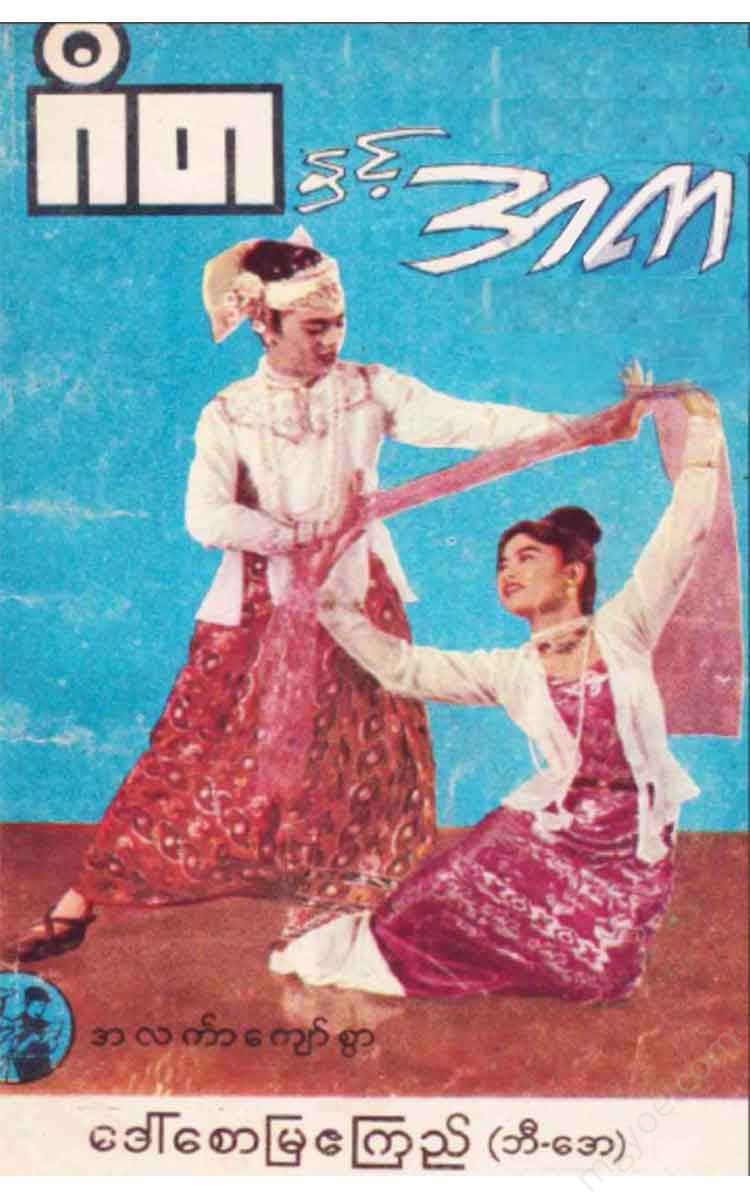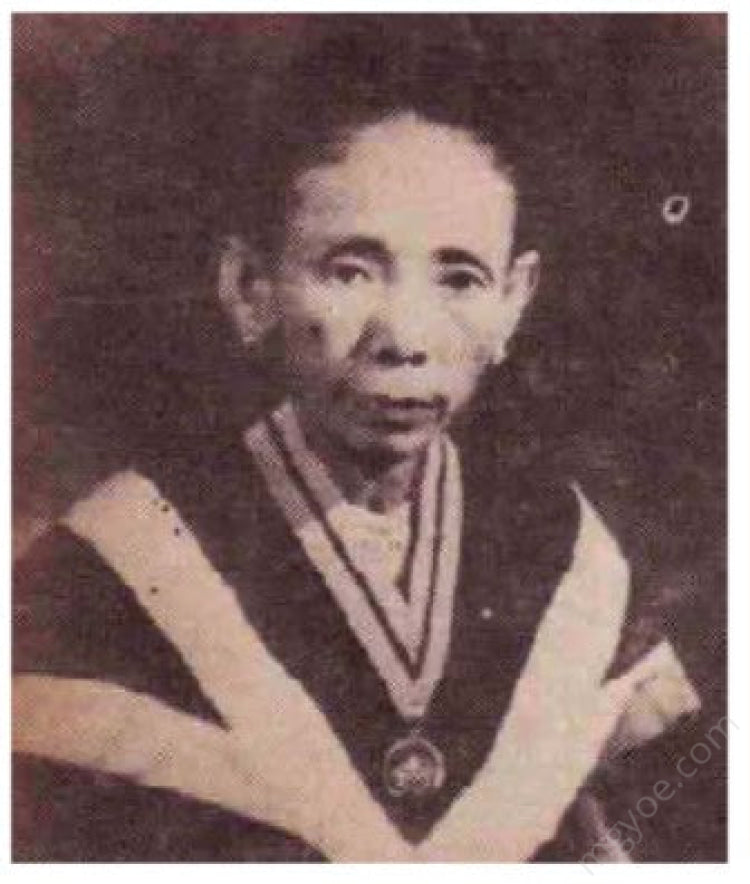Other Websites
Daw Saw Mya Ae Kyi - Music and Dance
Daw Saw Mya Ae Kyi - Music and Dance
Couldn't load pickup availability
Daw Saw Mya Ekyi Music and Dance
Daw Saw Mya Ae Kyi..(Myanmar 1253-1429) She was the daughter of Maung Maung Tin and his wife Khin Buk, who was a herald of the war during the reign of King Thibaw. She was known as Khin Sein Kyi for short..
Since childhood, he had a passion for singing and dancing and studied it. Khin Sein Kyi's artistic passion and lineage were so admired that the Thibaw Saw Bwa Gyi, Sa Saw Chel, took him and adopted him, changed his name to "Saw Mya Ekyi Thakin Ma". Later, he was also awarded the titles of "Saw Ukka" and "Siri Sutthiwaddy".
With the encouragement of the Saw Bwa, Saw Mya Ekyi Thakin Ma systematically learned music from the great court musicians and dancers of King Thibaw who were serving in the Thibaw Ha palace at that time, and gained a solid foundation. After leaving the Thibaw Ha palace, she continued to study various musical disciplines, becoming a musical mother who was well-versed in various musical disciplines.
Daw Saw Mya Kyi, who had acquired all the musical knowledge she had, devotedly and diligently shared it with those who were interested in music until her death. For her contribution to the country through such musical knowledge, she was awarded the title of “Alanka Kyaw Swar” by the Union Government in 1952, and in 1954, she was awarded an honorary BA degree in Fine Arts by the University of Yangon, the only person in Myanmar to have received such a degree.
He also served as the music research officer at the Myanmar Historical Commission until his death on the 12th day of the first lunar month of Tapotwe, 1329 (February 10, 1968).
Introductory text
The word art has a subtle and profound meaning, but it is very powerful in inspiring people's will. This art is created by the artist's will and the artist's imagination and intelligence. Due to the power of this art, it can cause one of the nine emotions in the body of the poet: joy, sorrow, compassion, love, disgust, excitement, fear, wonder, and calmness. The art that can do this also includes the art of drama. The meaning of the Burmese word for drama is very broad. Among the various types of drama, this book, titled "Music and Dance", presents various interesting facts related to singing, dancing, and music by Daw Saw Mya Kyi, a famous musician in the Burmese music world.
Although this book has only just been published for various reasons, the manuscript was compiled by Daw Saw Mya Kyi more than 15 years ago. In this "Music and Dance", the great mother of music, the teachers and teachers who nursed her education, the attitudes and singing styles of various singers, the art of singing without instruments, the making and use of musical instruments, the basics of Burmese dance, the dance and acting of drama, puppetry, and the nature of the world of drama are briefly and clearly described. The traditional way of performing drama and puppetry is explained, and it is clear to read that the work of the great artists was both meaningful and disciplined.
In addition, a brief biography of the great ancient musicians, including the Minister of Music, Myawaddy Mingyi U Sa, Prince Pokhan, King Kyi Daw Khin Son, Queen Ma Mya Kalay, Prince Pyin Si, and Hlaing Theik Khaung Tin, is presented, along with various songs they composed. A particularly interesting part of this chapter is the detailed explanation of the prominent compositions of Myawaddy Mingyi U Sa.
It is not easy to become proficient in any art form. It requires both talent and hard work. Daw Saw Mya Kyi had a talent for music and hard work, so the information in this book will testify that she was well-versed in music and dance from various angles.
Daw Saw Mya Ek Kyi's family line is from the time of the King of Mandalay, the King of Mandalay. Her grandmother was the daughter of the prince of the royal family, Theik Tin Shwe. Her father was Maung Maung Tin, a messenger of the Burmese people during the reign of King Thibaw, and her mother was Khin Buk, a steward of Princess Saw Hla Theik Khaung Tin. Daw Saw Mya Ek Kyi was born in 1253 and is known as Khin Sein Kyi.
Since he was young, he had a passion for singing, so when he was 12 years old (1265 CE), his parents began teaching him singing under the title of Saya U Ladd, who was the singer of King Thibaw. After King Thibaw passed away, the singers who served in the palace were no longer available, so the great ruler of Thibaw, Sa Che, who respected and admired the art of singing, invited these artists to serve in his court.
In addition, Sa Saw Chel was impressed by Khin Sein Kyi's musical and dance skills, who was only 13 years old at the time, and he took up the lineage. Khin Sein Kyi continued to learn music from the great musicians who were employed and served in the royal palace. The Saw Bwa Kyi was so fond of Khin Sein Kyi that he gave her the title of "Saw Mya Kyi Thakin Ma" instead of her maiden name. Later, he was given the title of "Saw Ukka" and at the coronation ceremony of the Saw Bwa Kyi, he was given the title of "Shiri Sutthiwaddy".
Daw Saw Mya Ae Kyi studied hard at the court of Hsipaw Haw how to play the harp, how to sing songs systematically, how to write songs, how to dance, etc.
Having gained a solid foundation, she continued to enrich her extensive and profound knowledge of the arts, becoming a master of the arts, fully imbued with the arts of music, poetry, and music. She was respected and revered in the music world as the Mother of Music.
Daw Saw Mya Kyi married her second husband, U Tin, who shared her passion. The great musician shared all the knowledge and skills she had acquired.
He also distributed music to those who appreciated and loved the art of music. Before World War II, he worked as a singing instructor at the Government Art and Instrumental Music School.
He worked. After the war, he was called upon by Deedok U Ba Cho to take charge of the development of Burmese music. During the independence era, he taught music lessons on the radio. He was also a member of the committee for the production of great songs. In 1952, the Union of Burma government awarded him the title of Master of Arts. From 1953 to 1957, he served as a music instructor at the Kanbesa Vocational School. While serving in this capacity, he was awarded an honorary BA degree in Fine Arts from the University of Yangon in 1954. At that time, Daw Saw Mya Ae Kyi was the only person in Burma to have received this degree.
After that, Daw Saw Mya Ek Kyi served as a music researcher in the Historical Commission, and on the other hand, she diligently passed on her musical knowledge to music enthusiasts who were interested in music. She passed away on the 12th of the first lunar month of the year 1329.
To understand how Daw Saw Mya Ae Kyi became a nationally renowned musician, we need to explain in which field she excelled.
In the world of instrumental music, the key to the art of music is the rhythm called “meadow.” Playing and singing must be done within the boundaries of this rhythm, so both singing and playing must be in tune with the mead. Normally, it seems easy to keep the mead in tune, but in the art of music, the mead is a distance of one-tenth, one-twentieth, and one-sixtieth of a second.
It is impossible to understand the grammar of music scholars, but by knowing the subtleties of that musical rhythm, we can only guess at the depth of their knowledge.
Some instrumentalists like to sing slowly. Some like to sing quickly. Some are quick and easy to create with their own imagination. Daw Saw Mya Ekyi not only gives the musician the melody he likes, but also creates a melody that is pleasing to the ear by shaping and moving within the melody that the musician likes, so that all instrumentalists are called “a good melody singer.” (This is Daw Saw Mya Kyi’s good singing.)
Daw Saw Mya Kyi is also skilled in playing the harp, and she can play both of the two styles that are currently popular in playing the harp: 1. Dewa Indra style, 2. U Phu Khaung style, and both of them can be played with a bow, a hand, a group, and a group. This is also Daw
This is one of Saw Mya Kyi's unique talents. The reason is that even a musician who is skilled in one of the two above methods, after a long period of study and a large number of songs, will forget the "principles" he first learned.
Even though they forget, a person who is worthy of being called a music teacher can create and play the forgotten songs and melodies with his or her own intelligence. Because of such mistakes, the originals often fail, but Daw Saw Mya Ekyi can still play the original songs in the Dewa Indra style and U Phu Khaung style, but in a different way. Having studied with good teachers, she was able to compose well in the 20s, including the pongyi sound, pongyi tsang, yekin tsang, oo tsang, lay cho, dwe cho, te dat, thi chin, etc. Among the many songs written by Daw Saw Mya Ekyi, there are "Moe Dewa", "La Min So Ta", "Moe Pa Zon"
The music of the Moedewada music is still famous today. The composition, arrangement, arrangement, and musical notes of the Moedewada music are very much in line with the standards of ancient Burmese music, and the sounds are also elegant and beautiful. Among our musical instrument scholars, we have not heard anyone who is able to excel in all three aspects of singing and playing, except for the King of Myawaddy and the Queen of the West, Myakalay.
May we read and study the personal and written works of the great musician Daw Saw Mya Ae Kyi, who is so talented in this field of music, and work to strengthen and promote the development of Myanmar's traditional arts in a correct and systematic manner.
The Library of Myanmar has published and distributed the book “Music and Dance,” the only work of the great musician, in honor of the late great musician.
Literature Hall



